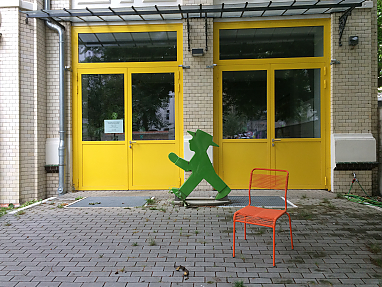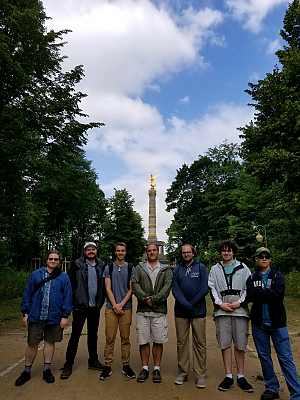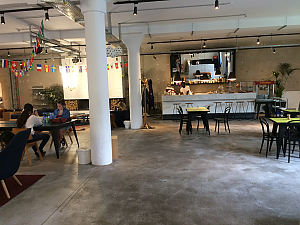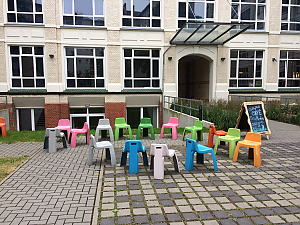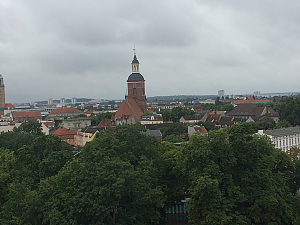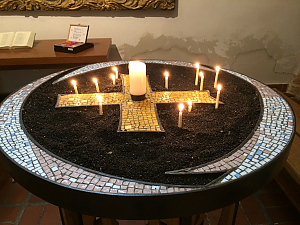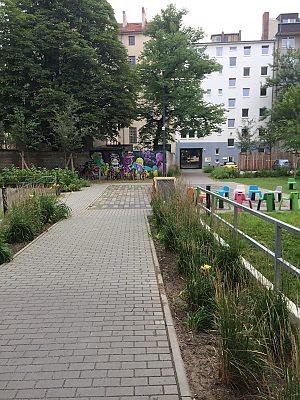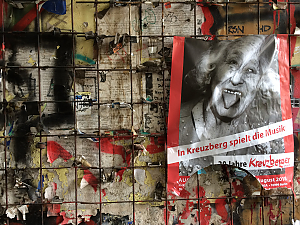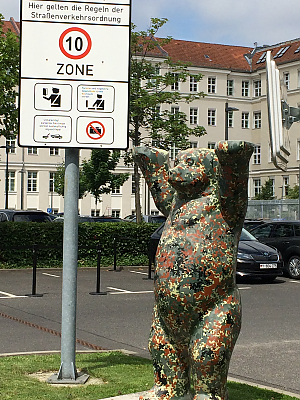Week Two in Berlin
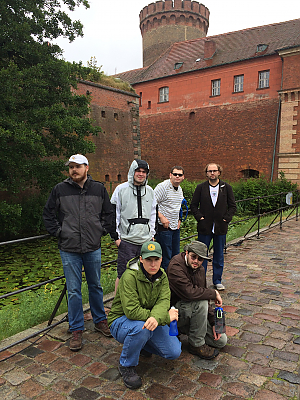
After a great weekend of much exploration, including a visit to a medieval fortress in Spandau, we have launched into the second week of our curriculum in Berlin studying the experiences of different groups under the Nazi regime. Today we visited the German Resistance Museum, and had a wonderful private guide who had done her PhD work on artists who resisted the Nazi's, and who gave us some very good background information. Tomorrow we will visit the "Topography of Terror" site, and on Wednesday, Sachsenhausen Concentration Camp. I am including some journal entries below that the students wrote about their visits to the Olympic Stadium, Tempelhof Airfield, and the Schwerbelastungskorpor ("weight-bearing body"), the test post that Albert Speer, the Nazi architect of a vision for Hitler's grandiose Germania, had driven into the soil in Berlin to see if it could hold the many tons necessary to achieve Hitler's vision for grand monuments along Berlin boulevards rivaling any in the world.
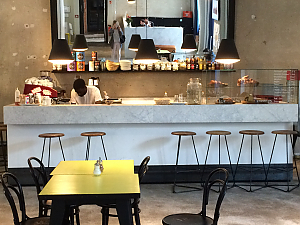
Scenes from the CIEE Berlin Campus
Today we visited Berlin's Olympic Stadium, which stands today as a multimodal venue that refuses to obfuscate its checkered past. The Stadium as it stands today has a complicated origin story: when the International Olympic Committee selected Berlin to hold the Olympic Games in 1931, the Weimar government was still in control, and they planned to restore a previously planned arena that wasn't completed due to World War I. However, the Nazis took power soon afterwards, and their plans deviated sharply from the original designs. The original structure was completely demolished, and a much grander structure was erected in its place. Giant pavilions flanked the structure, which would prove useful as staging grounds for massive rallies and military parades, which would feature heavily in Nazi propaganda. The architecture heavily featured Nazi symbols such as the Imperial Eagle and the Swastika, and the arena itself featured a balcony specially made for Hitler and his entourage. This structure, as well as everything surrounding it, was designed for the purpose of glorifying the Nazis. After the fall of the Nazi leadership, Germany faced a hard choice when it came to the Olympic stadium. All of the fascist symbolism was removed, of course, but other, more difficult questions remained: should the stadium continue standing at all? If so, how will it be preserved? What should be done about engrained features of the architecture that alluded to the previous government, such as Hitler's balcony? In the end, those in charge made the bold choice to renovate the arena for modern use, but preserve as many historical aspects as possible – even those that reflected a dark period in history. The interior seating is all new, but many aspects, like much of the original stonework, lighting, and exterior, are unchanged. In addition, the stadium itself continues to host many sporting and entertainment events. Instead of destroying or altering the structure in an effort to erase the past, the people of Berlin chose to shoulder the burden of their history and still push on in order to create a brighter tomorrow. I can't think of a more cogent metaphor for Berlin as a whole.
Adam Cook
Earlier this week the class and I went on a field trip to the Schwerbelastungskorper, a giant concrete cylinder that served as a test to see if Hitler’s dream capital, Germania could exist. From what I could see, Hitler and his chief architect Albert Speer, who planned to create Germania, had big goals; even though I know that Hitler and the Nazis were evil and had committed indescribable atrocities during their regime, I can see art when I see it. The buildings they were planning to make would have been an interesting sight just to see once even though they were planned by evil people. The class explored the inside of the concrete cylinder where French prisoners of war (POWs) were forced to create the building. It was a hot day and I couldn’t stop sweating and it wasn’t until it was the late afternoon that the weather began to cool down when we were about to see the Tempelhof airport. Seeing the giant airport up close was a sight to behold-- especially seeing the statues up front and learning its history and what it was used for after the war; and that it was still in use until 2008, where it was used for commercial flights. It’s interesting to visit famous places and see what could have happened if the dream capitol had been completed and the old airport of the city of Berlin. When I knew that we would go to see these places I was excited to visit historical sites during one of world history's major events and other places we got to see.
Ethan Ilchert
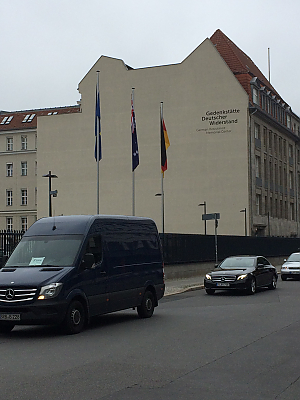
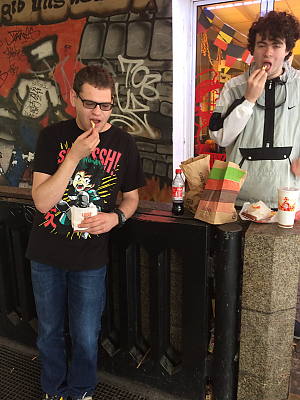
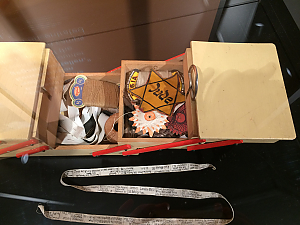
Tempelhof layers of history
Most places are like onions, with multiple layers of history. Few places are as layered as Tempelhof. Built by the Nazis, it started life as a civilian airport and as part of Hitler’s plan for Germania. However, with the outbreak of World War 2, it soon became a concentration camp with prisoners making tank parts, ammo, and more. Not long after, I'm fairly certain that during the Battle of Berlin it served as barracks for the occupying Russian forces. After WW2, the airport was used as a normal airport. However, it would soon be called again to the stage of history during the Berlin airlift. During the airlift, thousands of tons of food; fuel water and medicine were flown into West Berlin to subvert the Russian blockade. The airlift lasted several months and succeeded in keeping West Berlin out of communist hands. As far as I know, after the airlift the airport itself fell into the background. It was used as an airport for Berlin until 2008 and was then converted into a park in the middle of Berlin. However, in recent times it has come once again closer to the forefront with the German refugee crisis.Thousands of refugees from Syria and other parts of the Middle East have migrated to Europe, including Germany. As a result, there has been much debate as to what to do. Tempelhof has once again been called into service as a refugee camp. Though with the passing of the crisis it has lessened in this role, it still has resulted in another layer being added to onion and to the overall history of not just itself but also all of Berlin.
Dash Katz
The day of June 20th, 2018 was a semi-unusual day. It wasn't fully unusual since there were no supernatural occurrences. On my trip to the 1936 Olympic stadium while riding on a locomotive, an interesting thought came to mind. I should have been thinking about the stadium, but I could not shake the thought. I then texted an acquaintance of mine about the question that has plagued my mind for a whopping one whole minute. I know if this question were to succeed I'd have something to write about. I asked him "Is the kangaroo all powerful " at the ripe time of 10:43 in the morning. It came to my mind since I wondered just how deep that pouch goes, what exactly does it contain and what reaction would I get if I asked that pointless question. He remarked by saying "It's 4:43 in the morning, it's way too freakin' early to be doing this". So, I waited.
Throughout the day I was getting ready for the kangaroo debate. Nothing distracted me from preparing for the debate except for eating, using the bathroom, using Google maps, understanding the Olympic stadium and various other miscellaneous thoughts and desires. After maybe two hours of walking in circles, I arrived home to engage in my kangaroo debate. To have this person take part in the debate, I explained to him that it was for a school assignment.
His opening remarks used very particle reasoning to explain how the kangaroo is not all-powerful being by giving me an anatomy lesson. The person explained to me how a kangaroo has two defenses -- kicking and hopping away; it is not indestructible. I went with a more abstract rebuttal. I theorized a group of rich upper-class kangaroos smoking pipes and wearing monocles. The acquaintance countered by questioning the basis of this convoluted theory. This slowly morphed into a discombobulated debate discussing kangaroo bodybuilding and whether it could be a legit sport. The doubtor argued that it could work, but they couldn't get the same muscle mass as an Arnold Schwarzenegger or a Lou Ferrigno-type since they couldn't hold the weights. While I argued the roo could perform different exercises which are perfectly designed for kangaroo paws, such as destroying cans, which would give the same results as human bodybuilders. After another extraneous minute, the debate ended. I had swayed my opponent's views upon the world and I'll look forward to seeing a world where marsupials can compete against professional bodybuilders in the not too distant future.
Henry Tobias Mandler
An experience I had this past week was going to Berlin-Tempelhof airport, Olympic Stadium, and the Schwerbelastungskorper. The reason why they were such experiences for me because I have read about these places before, but never seen them in person. When visiting Berlin-Tempelhof, I was very impressed with the architecture of the building, which would mostly be associated with the Nazi era since it has huge eagle buttresses at the end of each building .The windows are distinctive with very similar and perfect symmetry of the widows that you would find on other buildings of the era, too. The Olympic Stadium was another place to experience how Hitler envisioned German architecture being very similar to that of the Romans and Greeks, with more masculinity on a grand stand. Like Berlin-Tempelhof, the building has that symmetry of how Hitler envisioned it and with other buildings like the Bell tower aligned with the Olympic flame and the sculptures outside the stadium. These two architectural wonders would be part of a bigger mass propaganda image of the cultural accomplishments of the Third Reich. The Schwerbelastungskorper was not something I heard of before and was only a tool used to test the soil of Berlin to see it building great structures, of what would be Germania, were possible. To me, it was essentially a giant concrete casement and a small room for testing the soil on how far the concrete is sinking into the ground. When war was declared, plans for the city of Germania slowed and then eventually put on hold. After visiting these sites, I was able to tick three things off my bucket list and see how close Hitler’s fantasy would’ve become a reality. For me to better understand this is to place myself in the shoes of people at the time and in the vision of not-knowing what the future would be.
Jack Mundt
Today was the group’s visit to the Olympic Stadium, an eighty-two year old stadium that is still in full use and has been meticulously updated throughout it’s long history. Built in the 1930’s by the Third Reich, as a sample of honor and prestige in an administration that longed for nothing more, the stadium stunned the world with its mass and its neoclassical architecture, and perhaps most importantly hosted the 1936 Olympic Games, which has the shadow of the infamous Furher who attended, and refused to honor gold metal winner Jesse Owens. Though it had the mixed honor and shame of living through World War II, its history doesn’t stop short of there. For decade after decade the stadium continued to serve as a professional football venue, and renovations to modernize the stadium seem to have begun around the 1970s with the surrounding awning around the top of the stadium, which over time appears to have taken full form for the 2006 World Cup. Although maybe the most noteworthy event in recent years, the stadium with its notable updates and its preserved history is still a stunner of a stadium being one of Germany’s top attractions.
Christopher Ogle
So far, this trip has been fun and educational. I’ve seen a lot, eaten at different places, and learned many interesting facts about the history of Berlin. But there is one goal I set for myself that I am especially proud to be keeping. That goal is walking around a lot and getting plenty of exercise. Since classes first started, we have been walking to many of our destinations, after taking the subway for some of them, of course. Some of the best walks I took this week are the 30-minute walk I took with the class to the Schwerbelastungskorper and back, and the walk Andrew and I took after we separated from everyone after the trip to the Story of Berlin museum. Both times I walked so much, I could barely feel my feet afterwards. I think that is partly why I have been sleeping so well lately. See, to me, walking around these areas is like a mix of downtown LA and the streets of New York City. That makes it more enjoyable and motivating for me as a result. Plus, I get to see a lot of different sites along the way. So overall, I’d say my goal of walking and exercising a lot is being met rather well so far, and I plan to keep it that way for the remainder of the trip.
Gus Zarefsky
